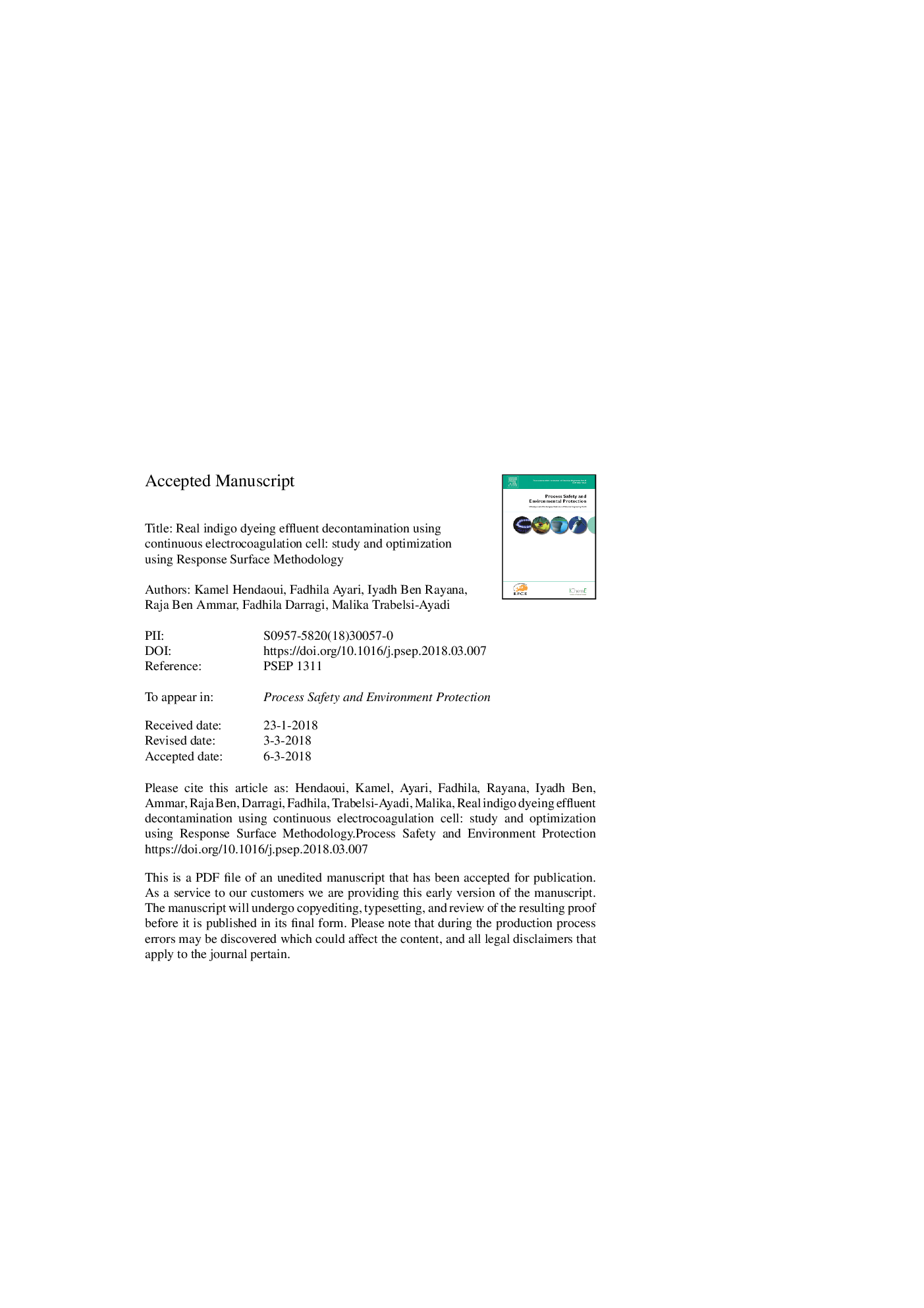| Article ID | Journal | Published Year | Pages | File Type |
|---|---|---|---|---|
| 6974134 | Process Safety and Environmental Protection | 2018 | 31 Pages |
Abstract
In the present study, the response surface methodology (RSM) model was applied to study and perform the treatment of real indigo dyeing effluent by continuous electrocoagulation process using iron electrodes. The main effect of three parameters: initial pH, inlet flow rate and applied voltage along with their interaction on pollutants removal were evaluated. Results show that the increase of applied voltage and the decrease of inlet flow rate enhance the efficiencies of the pollutants removals. According to P values and analysis of variance ANOVA, there is a good adjustment between the second order regression models and experimental data for all responses. From surface plot analysis, it was well observed that the best pollutants removals were achieved at neutral pH range with the lowest flow rate and the highest voltage. When the conductivity removal was neglected, with the optimal parameters values: 7.58Â pH, 1Â L/min inlet flow rate and 101Â V applied voltage the color and COD removal were achieved as 93.77% and 92.07% respectively (fixed target equal to 95%). However, at optimum EC conditions: pH 7.2, inlet flow rate 1.1Â L/min and 66Â V applied voltage: 89.2%, 76.1% and 29.76% of color, COD and conductivity removal were achieved respectively with only 0.527 US$ per m3 of treated effluent as total cost. In the actual study, with the EC process the conductivity removal was improved by 60% compared with the actual biological used process.
Related Topics
Physical Sciences and Engineering
Chemical Engineering
Chemical Health and Safety
Authors
Kamel Hendaoui, Fadhila Ayari, Iyadh Ben Rayana, Raja Ben Amar, Fadhila Darragi, Malika Trabelsi-Ayadi,
